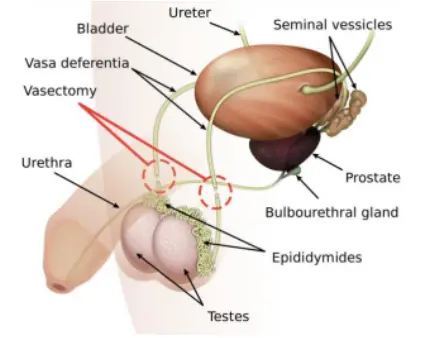Considering Vasectomy?
Vasectomy is a great choice for many men if they do not want to biologically father (more) children. It is the most dependable option for birth control for men and is a minor office procedure that does not affect sexual functioning in any significant way.
Whether you are the father of many children, or the father of none, the choice to undergo a vasectomy is yours. For men in their 20s with no children, we encourage you to think of the many ways that your life may be different over the next 10 – 20 years, and to be sure that in every scenario you are at peace with the idea that you would not be able to become a biological father.
For all people considering vasectomy, if you are in a relationship that is struggling, this may not be the best time to make a permanent choice. Likewise, if your partner is pregnant, even if the pregnancy was unplanned, it might make sense to wait until the delivery of the child before actually having the procedure.
My two key take-home points if you are considering having a vasectomy:
1) I strongly suggest that you think of a vasectomy as permanent and not reversible
Said another way, I encourage you to approach having a vasectomy with the idea that after the vasectomy you will not be able to ever biologically father children. What about vasectomy reversal? Yes, there is a microsurgical procedure that can be performed to reconnect the vas deferens after having a vasectomy, but it is by no means certain that this will lead to the delivery of a child.
2) Immediately following a vasectomy, you are not safe for unprotected intercourse
until this has been proven with a negative semen analysis. There are literally millions of sperm downstream from the vasectomy site and these can take many months to be flushed out. You know that it only takes one live sperm to make a baby; consider that in the semen produced in a typical ejaculation there can be up to 500 Million sperm.
Practical Next Steps:
- Decide if you would like to have a consultation with Dr. Curtis to discuss any aspects of having a vasectomy. We offer consultations at no charge and you do not need a referral to set this up.
- If you wish to have a consultation, we offer this by phone or in-person with Dr. Curtis at our office at 108 North Main Street in White River Junction, VT. During the consultation you are, of course, welcome to have a partner present, but that is up to you. Please reach out by phone or by email to set up your appointment.
- If you are ready to schedule the actual vasectomy, with or without having a consultation, this can be done on our Contact Page, or by calling/emailing our office. At the time of scheduling the vasectomy, you pay $200 towards the total $1200 cost, paying the remainder on the day of the procedure. You do not need a referral to schedule the vasectomy.
 With this technique, a tiny skin opening is made (perhaps 2 or 3 millimeters) after the tissue is numb. The worst you might feel when the skin is numb is comparable to a bug bite. The opening made in the skin is so small that it is purposely not stitched closed at the end of the procedure because it just seals up on its own. This tiny opening also serves as a “pre-positioned drain” so that if there is any fluid buildup right after the procedure, it has a way to get out.
With this technique, a tiny skin opening is made (perhaps 2 or 3 millimeters) after the tissue is numb. The worst you might feel when the skin is numb is comparable to a bug bite. The opening made in the skin is so small that it is purposely not stitched closed at the end of the procedure because it just seals up on its own. This tiny opening also serves as a “pre-positioned drain” so that if there is any fluid buildup right after the procedure, it has a way to get out.